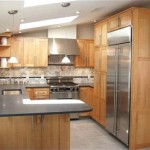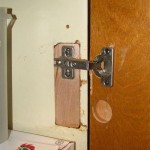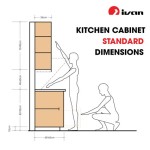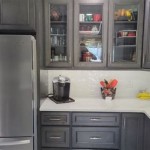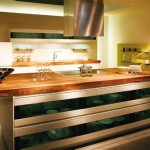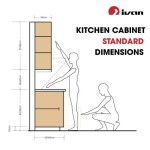Is Matt Paint Ok For Kitchen Use?
The kitchen, often considered the heart of the home, is a space subjected to a unique set of environmental challenges. High humidity, frequent temperature fluctuations, splatters from cooking, and general daily wear and tear all contribute to the demanding nature of this room. When undertaking a kitchen renovation or simply refreshing the existing décor with a new coat of paint, the selection of the right type of paint becomes paramount. While many homeowners instinctively reach for gloss or semi-gloss paints, renowned for their durability and ease of cleaning, matt paint, with its sophisticated, non-reflective finish, is increasingly gaining popularity. The question then arises: is matt paint genuinely a suitable choice for the rigors of a kitchen environment?
Matt paint possesses a very low sheen level, meaning it reflects very little light. This characteristic contributes to its ability to conceal imperfections on walls and ceilings, creating a smoother, more uniform appearance. Its lack of reflectivity also lends a sense of depth and softness to a room, making it an attractive option for those seeking a more subtle and refined aesthetic. However, the very properties that make matt paint visually appealing also raise concerns about its practicality in a high-traffic, high-moisture area like the kitchen. Understanding the pros and cons, and the specific formulations available, is crucial for making an informed decision.
Understanding the Traditional Limitations of Matt Paint
Historically, matt paint has been perceived as less durable and more difficult to clean compared to paints with higher sheen levels. The porous nature of older matt paint formulations made them susceptible to staining and difficult to wipe clean without burnishing or damaging the finish. This perceived vulnerability stemmed from the fact that matt paints have a higher pigment-to-binder ratio than glossier paints. The binder, typically a resin, is what holds the pigment together and forms a protective film. With less binder, the surface is more open and absorbent, making it easier for spills and stains to penetrate. This inherent characteristic was the primary reason matt paint was often relegated to low-traffic areas like bedrooms or living rooms, where the risk of spills and rigorous cleaning was lower.
Furthermore, traditional matt paints were known to be less resistant to moisture. In humid environments, like kitchens and bathrooms, the paint film could become compromised, leading to blistering, peeling, or even the growth of mold and mildew. The constant fluctuations in temperature, particularly near cooking areas, could also contribute to the breakdown of the paint film over time. The combination of these factors led many homeowners to believe that matt paint, while aesthetically pleasing, was simply not robust enough for the demands of a kitchen.
The susceptibility to burnishing was another significant concern. Burnishing occurs when the paint surface is rubbed or scrubbed, leading to a change in texture and sheen. In the case of matt paint, even gentle cleaning could sometimes result in shiny patches, detracting from the uniform, non-reflective finish that is its defining characteristic. This made maintaining the original appearance of matt painted walls in a kitchen a constant challenge.
The Evolution of Matt Paint Technology
Fortunately, the landscape of paint technology has evolved significantly in recent years. Modern paint formulations have addressed many of the traditional limitations associated with matt paint, making it a far more viable option for kitchens and other high-traffic areas. Manufacturers have developed advanced acrylic and latex-based matt paints that offer improved durability, stain resistance, and scrubbability. These advancements are largely due to improvements in binder technology and the incorporation of specialized additives.
One key innovation has been the development of cross-linking acrylic resins. These resins form a tighter, more durable film that is less porous and more resistant to staining. The cross-linking process creates a network of interconnected polymer chains, which enhances the paint's ability to withstand abrasion and repeated cleaning. This makes modern matt paints far less susceptible to burnishing and damage from everyday wear and tear.
Another important advancement is the incorporation of stain-resistant additives. These additives create a barrier that prevents stains from penetrating the paint film, making them easier to wipe clean. Some formulations even include antimicrobial agents to inhibit the growth of mold and mildew, which is particularly beneficial in humid environments like kitchens. These additives significantly improve the hygiene and longevity of matt paint in demanding settings.
Furthermore, some manufacturers now offer specialized "kitchen and bathroom" matt paints that are specifically formulated to withstand the challenges of these environments. These paints often contain higher levels of mildewcides and offer enhanced moisture resistance compared to standard matt paints. They are designed to provide a durable, long-lasting finish that can withstand the rigors of a busy kitchen without compromising on aesthetic appeal.
The introduction of washable matt paints is a game-changer. These formulations allow for vigorous cleaning without damaging the finish or causing burnishing. They represent a significant departure from traditional matt paints, which were notorious for their limited scrubbability. Washable matt paints offer the best of both worlds: the sophisticated look of matt paint and the practicality of a more durable, easy-to-clean finish.
Factors to Consider When Selecting Matt Paint for a Kitchen
Even with the advancements in matt paint technology, careful consideration should be given to several factors before deciding to use it in a kitchen. Not all matt paints are created equal, and the specific formulation and application techniques can significantly impact the performance and longevity of the finish.
First and foremost, it is essential to choose a high-quality matt paint specifically formulated for interior use. Opting for a cheaper, lower-quality paint can negate the benefits of the improvements in matt paint technology. Look for paints that are labeled as "scrubbable," "washable," or "kitchen and bathroom" paint. These paints are designed to withstand the demands of a kitchen environment and offer enhanced durability and stain resistance.
Surface preparation is also crucial. Before applying any paint, the walls must be thoroughly cleaned and primed. This ensures proper adhesion and a smooth, even finish. Any existing imperfections, such as cracks or holes, should be repaired and smoothed out before painting. A good quality primer will also help to seal the surface and prevent moisture from penetrating the paint film. For kitchens, a mold-resistant primer is a particularly beneficial choice.
The application technique can also affect the performance of matt paint. It is important to apply the paint in thin, even coats, allowing each coat to dry completely before applying the next. Avoid applying too much paint in one coat, as this can lead to sagging or uneven drying. Using high-quality brushes and rollers will also help to achieve a smooth, professional finish. For high humidity or frequently used areas, consider applying an extra coat of paint for added protection.
The color choice can also influence the perceived cleanliness of the kitchen. Lighter colors tend to show dirt and stains more readily than darker colors. While a crisp white matt kitchen may be visually stunning, it may require more frequent cleaning than a kitchen painted in a richer, darker hue. Consider the lifestyle and cooking habits of the household when selecting a color palette.
Finally, it is important to understand the limitations of matt paint, even with the advancements in technology. While modern matt paints are more durable and stain-resistant than their predecessors, they may still require more careful cleaning than glossier paints. Avoid using harsh chemicals or abrasive cleaners, as these can damage the finish. Instead, opt for mild detergents and soft cloths or sponges. Promptly wiping up spills and splatters will also help to prevent stains from setting in.
In conclusion, while traditional matt paint may have been unsuitable for the demanding environment of a kitchen, the advancements in paint technology have made modern matt paints a viable option for homeowners seeking a sophisticated, non-reflective finish. By selecting a high-quality, scrubbable matt paint specifically formulated for interior use, properly preparing the surface, and following careful application techniques, it is possible to achieve a beautiful and durable kitchen that showcases the unique aesthetic of matt paint. However, awareness of its maintenance requirements in comparison to glossier alternatives remains important for long-term satisfaction.

Matt Finish Kitchen Cabinets Ultimate Pros And Cons Experts

Dulux Easycare Kitchen Matt Paint Emulsion For Kitchens

Johnstone S Matt Kitchen Paint Hemlock Colour Supplies

Dulux Easycare Kitchen Matt Paint 2 5 Litre Next Day

Best Paint For A Kitchen Ceiling Decorator S Forum

Kitchen Colour Match Paint Decorating Centre

Johnstone S Kitchen Matt 2 5l

Rust Oleum Natural Charcoal Matt Kitchen Cupboard Paint 750ml

Hqc Durable Kitchen Matt Paint The Best

Kitchen Cupboard Paint Bundle Decorating Centre
Related Posts

